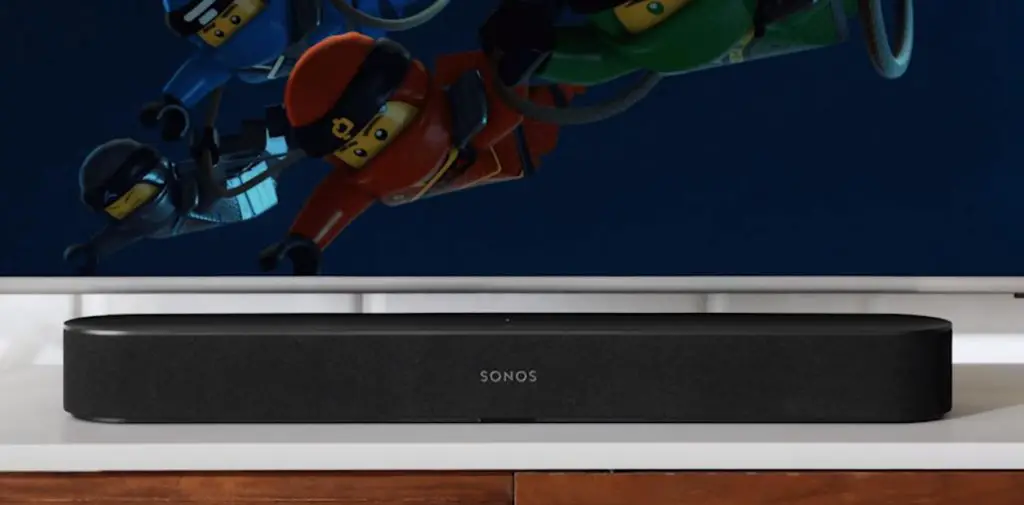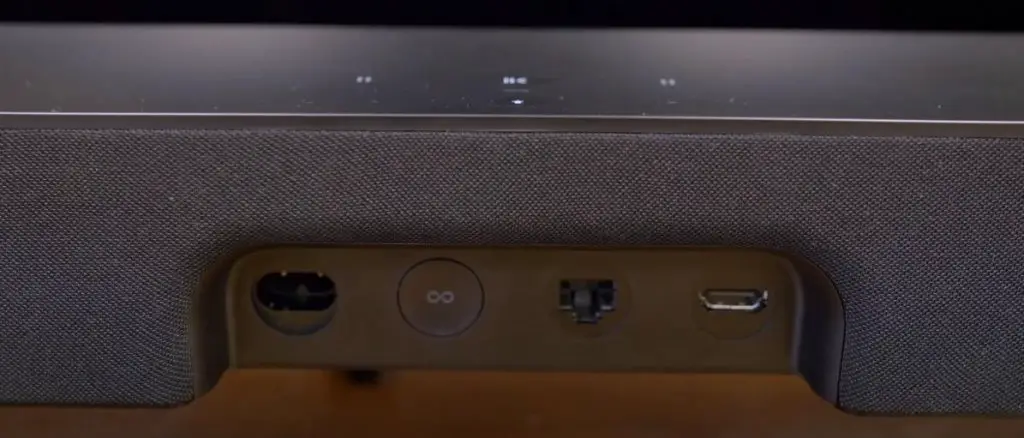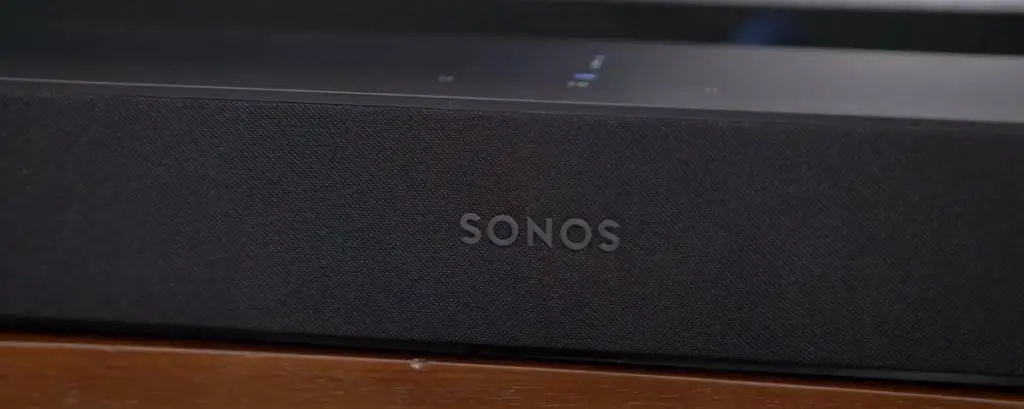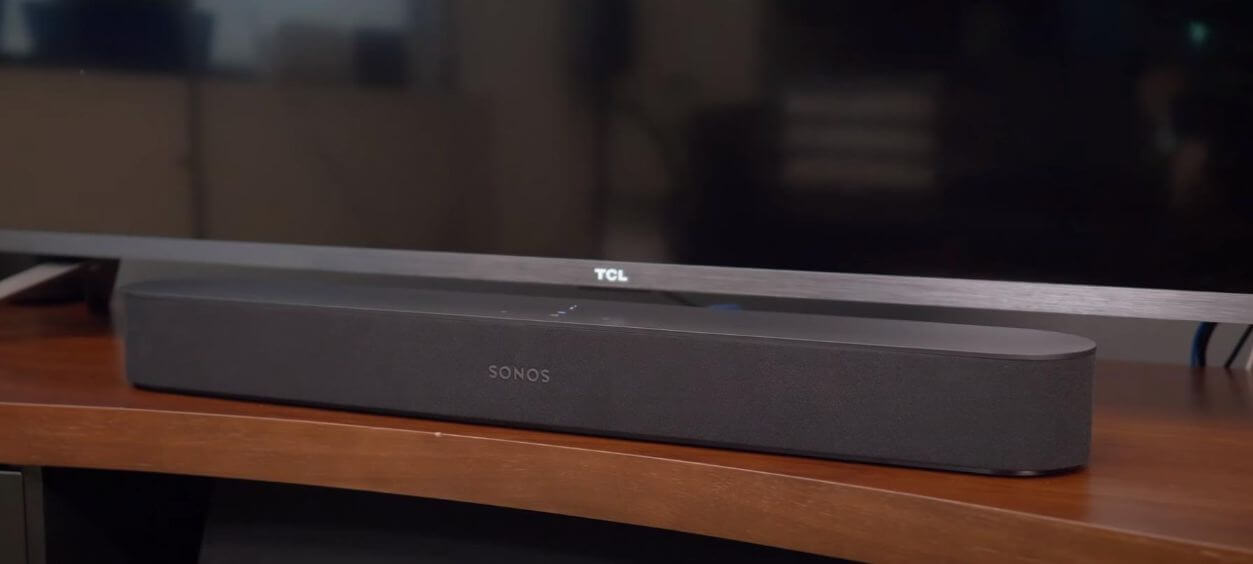Sonos Beam Soundbar Review
If you recently bought a new TV, you may notice that the built-in speakers don’t sound great and want an easy way to get better sound. Most soundbars’ setups are quite like the traditional home theatre speaker. Many can still be quite large and require additional components like subwoofers or rear speakers. So can you get an excellent compact standalone soundbar that always gives you an excellent cinema-like experience? Today we’ll be looking at the very compact Sonos Beam soundbar to see if you can still get big sound from a small soundbar.
The Sonos beam is still in the premium end of the soundbar market, but it does make access into the Sonos ecosystem much more affordable, and it does make a great first Sonos speaker as well. It’s backed by a couple of awards that won, such as the WhatHifi 2018 award for best soundbar under 500 pounds. It’s got many, many five-star customer reviews as well. It’s not only one of Sonos’ best products to date; it also dominates the soundbar category under 500 pounds.

In this post, we will be taking a look at the Sonos Beam’s design, including style, dimensions, and build quality. Then I’ll talk about its connectivity options and supported audio formats and taking a look at its controls and app support. After that, I’ll talk about its sound quality, including its center and surround sound performance and available sound enhancement features.
It’s worth mentioning that we’ll be testing this soundbar on its own without the optional subwoofer or surround speakers that you can add. We hope that soon we’ll try those variations, but for now, we’ll keep it simple and check out the bar’s standalone performance.
Design
Let’s have a closer look at the Sonos Beam. As soundbars go, the Sonos Beam is a very stylish product, and its modern design should stand the test of time for many years to come. The Sonos Beam has a nice sleek look and comes in black or white.
It’s compact, and it does address one of the concerns that its larger sibling, the Play Bar, had, with the fact that it was creeping into the bottom of some people’s TV screens when it was lying flat. The Beam is slim enough so that you can stand it in front of almost all TV’s with no problems at all.
It’s covered with a mesh fabric surrounding the entire bar and has three touch-sensitive buttons on top. The design matches Sonos’ other products, which is excellent if you plan on adding additional speakers to your home or home theatre setup.
The Beam is made out of heavy plastic, and the entire thing feels very well-built and robust. Unfortunately, it’s covered in a fabric that may be prone to getting dirty or damaged. And that’s it for the design.
Let’s take a look at the internals of the Sonos Beam. Because the end two speakers are pointed outwardly, you get a surprisingly wide soundstage for a speaker of this size. Under the hood, it’s got four oval-shaped woofers. Woofers are generally circular in shape, but the reason they’ve designed them in an oval shape is to be able to fit them in a slim form factor while also retaining excellent sound quality. It’s also got three passive radiators for your bass and mid-range. Finally, it’s got a single tweeter that sits in the center here for your dialogue. There are five far-field microphones built into the Sonos Beam so that your voice assistants can hear you over long distances or background noise.
Connectivity
Let’s look at connectivity options to see how the Sonos Beam hooks up with your system. The Sonos Beam only has three physical inputs: the power, Ethernet, and an HDMI port. This would typically mean the only way to connect the Beam is by HDMI ARC. Don’t worry. The Beam also comes with an HDMI to Optical adapter so that you can use an HDMI cable and connect it to the digital optical audio port of the TV, in case your TV doesn’t support ARC over any of its HDMI ports.

It’s worth mentioning that if you will connect the sound via HDMI, make sure you use the port marked “ARC” on your TV. And if necessary, remember to enable ARC within the settings of your TV!
Audio Formats
As far as supported audio formats, the Sonos Beam is a bit more limited than some other soundbar setups. Over both HDMI or optical, the Beam only supports Dolby Digital and Stereo PCM. This means all of the DTS codecs are unsupported, which is a shame. If you want to use the Sonos Beam as a speaker, you’ll want to connect it to your Wi-Fi network. Like most Sonos speakers, it doesn’t support Bluetooth, and you’ll stream music to it from any mobile device that’s connected to the same Wi-Fi network. This has a few advantages over Bluetooth, including a much further range, as well as only playing the music you’re streaming, as opposed to all phone audio. So if you take a phone call or get a notification, the audio won’t play through your soundbar, which is good.
Controls
As far as controls go, the Sonos beam has three touch-sensitive buttons on the top of the bar for basic controls like play/pause, volume up/down, skip and rewind tracks, or enable or disable the microphone. There’s no remote for this soundbar, but you can control the bar’s volume using your TV’s remote if you program it using the ‘remote control setup’ feature of the app.
Voice Control
The Sonos Beam also supports Amazon Alexa or Google Assistant for voice controls. So you can do things like play music from your favorite streaming service, turn on your TV if it supports google assistant or Alexa, or adjust the volume of your movie just by talking to your soundbar, which is excellent if your remote if just out of arm’s reach or if you’re feeling a little lazy.
Sonos is the first-ever audio company to provide users with the choice of voice assistants. So you can opt for Amazon Alexa or Google Assistant as part of the initial setup. It all owes to the promise from Sonos that they want to remain an open platform. As well as using your voice assistant to start playing music on the Beam, you can also use it for general things like news or weather or traffic or telling funny jokes or stories. The list goes on and on.
You can also choose your preferred voice assistant out of Google Assistant or Amazon Alexa as part of the initial set up. But if you did change your mind and you want to switch to Amazon Alexa or Google Assistant, you can do it easily in the Sonos app at any time.
App Support
As mentioned earlier, Sonos has its own app, and it’s somewhat necessary to get the most out of the Sonos Beam. You’ll want to use it to help set up your soundbar initially, and it can also work as your remote if you don’t pair it to your TV’s remote or use any voice controls. The app is also the best way to control your entire network of Sonos speakers if you end up expanding your setup beyond just the Sonos Beam.
Suppose you already have a Sonos set up in your house or want to add speakers after the fact to create one. In that case, you’ll be able to choose which speakers to send the music to, and control the volume of each one individually through the Sonos app, making it easy to fill your entire house with music.
Music Streaming
The great thing about the Sonos beam is that it’s not only a way of improving your TV’s audio quality, but you can also stream music to it and radio, audiobooks, podcasts, etc. Suppose you’ve got a streaming service like Spotify, Apple Music, or Amazon music, or any of the other 60 music services supported on the Sonos app. In that case, you can import that account into the Sonos app and control it from that app. Some services like Spotify or Deezer even let you control the music from their native apps themselves, meaning you can continue using the apps that you’ve always known and loved.
The Beam also supports Apple AirPlay 2. If you’ve got an Apple device such as an iPad, an iPhone, or an iPod, what you can do is cast any audio from whatever you’re watching on your device straight to the Sonos beam and listen to it that way. So it’s great for YouTube or any other services that you like to use regularly.
This is all made possible by using Wi-Fi as opposed to Bluetooth. So you’re free to roam around your home, and you don’t have to worry about being out of range from the Beam. Also, no calls or push notifications from your phone will play through the Beam. So it’s an entirely uninterrupted experience.
Sound Quality
Now that we’ve gone over connectivity and controls let’s take a look at what kind of sound you can expect to get from such a compact soundbar!
The stereo frequency response of the Sonos Beam is fairly decent. At the same time, it has a neutral, though slightly bright sound profile. Unfortunately, this soundbar lacks a bit of low-bass. This is to be expected from a standalone soundbar without a subwoofer, and again, if you want some extra kick and thump, you can add the Sonos wireless subwoofer separately.
On the upside, the Sonos Beam has side-firing speakers on the soundbar, which help create a tremendous wide soundstage, that sounds almost as wide as having dedicated home theatre tower speakers.
Surround Sound Configuration
The Sonos Beam is a 3.0 setup, meaning that it also has a dedicated center channel in addition to its Left and Right speakers. This helps it achieve excellent center channel performance, which results in more transparent and more accurate audio reproduction of dialogue in movies and TV shows. There are no dedicated surround channels, and all 5.1 or 7.1 content will be downmixed to a stereo signal. That means that the experience won’t be nearly as immersive as if you have dedicated speakers behind or beside you.
Let’s talk about using the Beam as part of a surround sound setup. Sonos made it easy and cost-effective to get surround sound in your very own living room. The Beam acts as your front three channels, so you’ve got your front center, front left, and front right. It’s effortless to add a subwoofer or two rear speakers such as play ones or Sonos ones for your rears. That will create a 5.1 Dolby Digital system. All of these components would then be set up wirelessly in the same room. All of your TV audio and your music would play on all of your speakers in perfect sync.
Other Features

The nice thing about this is these are the same speakers Sonos uses as standalone music-playback speakers for other rooms. So if you’re having a party and want music in multiple places, you could steal the rear speakers from your home theatre setup and use them to add music in your kitchen or on your patio for the night, though you might have to reconfigure them a bit in the app.
The Sonos Beam has more sound enhancement features than most soundbars we’ve tested so far, which is excellent. It has a room correction feature to adapt the sound to your room automatically. There’s also dialogue enhancement to help make voices clearer even at low volumes and a night mode to help make all content play at the same volume, so you don’t upset your neighbors with a sudden loud explosion or commercial. Also, while there’s no proper EQ, you can adjust the bass and treble a bit, which is nice.
It can integrate with many smart home products, including Nest thermostats, Philips hue lights, and even security cameras, and many more than this. So as your voice assistant gets more intelligent, so does your smart speaker.
It’s got night mode. So night mode means that if you’re watching TV or listening to music late at night, what you can do is enable it, and it will suppress the louder parts of the audio. And in turn, bring out the quieter parts of the audio so that you don’t have to worry about waking anyone up in your house.
Conclusion
Overall, the Sonos Beam is a decent soundbar for various uses, but it excels with dialogue and tv shows. Unfortunately, its lack of a subwoofer or rears means that it isn’t the best choice to create an immersive movie-theatre-like experience at home, though again, adding the optional wireless subwoofer rear speakers could help with this. It’s a decent option for music, and it can get quite loud, and the option to add additional speakers to create a multi-room setup is excellent.
I feel that this is one of the best sales products to date. it’s able to combine excellent sound quality with the ease of use of the Sonos ecosystem. Combining both music and TV audio into one speaker adds to the experience and makes you take advantage of what’s available to you these days.
The Sonos Beam is more suitable for small to medium-sized living rooms. So if you do have a larger size living room, you may want to go for something like a PlayBar, Play Base, or Sonos Arc because it’s just able to fill the room a lot better than the Beam would be able to.

